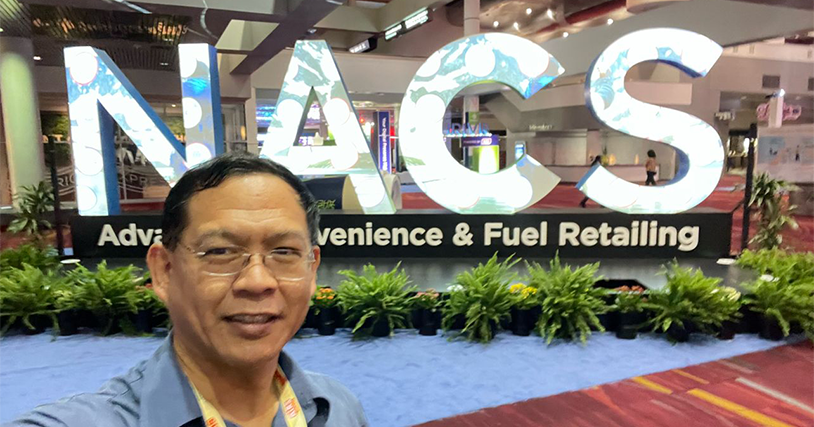At NACS Show 2022, Talk Centers on Three Big Challenges Facing C-Stores

The big challenges facing C-stores today aren’t new issues, but their growing impact is getting harder to ignore. At this year’s NACS Show 2022, hosted by the National Association of Convenience Stores, many presentations, keynotes and discussions focused on addressing labor shortages, demand decline and forecourt conversions—all of which will be essential to a thriving industry. Here are some of the challenges and solutions I heard about each of these topics at NACS.
Labor Shortages – Like most retailers, C-stores struggle to find, hire and retain talent. But unique to C-stores is the fact that many operate 24x7. And without enough people, C-stores can’t stay open around the clock. This can trigger a significant hit to their market differentiation as convenience stores and, more importantly, to their revenue streams. To address the labor challenges, C-store operators are turning to technology to increase the effectiveness and efficiency of their hiring process, improve the employee experience and simplify store operations. For example:
-
Hiring platforms enable store managers to accelerate processing a candidate’s paperwork and extend job offers in hours, rather than days or weeks.
-
Employee scheduling platforms provide much needed flexibility to exchange or pick up additional shifts.
-
Self-checkout kiosks enable employees to serve multiple customers simultaneously.
Artificial intelligence (AI) and machine learning (ML) solutions can even help mitigate the impact of the labor shortage by enabling C-stores to do more with the talent they have. For instance, AI/ML solutions can convert volumes of store operational data into actionable insights that store managers of all levels can easily decipher and implement.
Demand Decline – As gas mileage continues to improve and EVs grow in popularity, drivers are visiting gas stations and – by association, C-stores – less frequently. In parallel, sales of tobacco products have also declined sharply and aren’t as profitable. When faced with unfavorable market trends, operators must identify alternative ways to remain relevant. As in previous years, NACS State of the Industry (SOI) Report notes that hot prepared foods offer the greatest potential for C-store profitability, with operators finding success in competing with quick service restaurants (QSRs) in selling signature items. The key is to market new offerings effectively to change the customer’s brand impression.
Customer Conversions – Converting forecourt customers into retail customers continues to challenge many operators. While only about 30% of fuel patrons go into the store, NACS research has found that over 30% of C-store customers visit a QSR within 30 minutes of buying something from a C-store – yet another reason to offer hot prepared foods and signature items and leverage every digital channel to market to those customers. NACS’s new THRIVR initiative aims to elevate the industry’s ability to market new offerings digitally, plus enhance an operator’s capabilities in online search, social and brand reputation management.
As the industry grapples with market changes, one fact looms large: C-stores won’t be able to solve these challenges with the old network tech stacks they have in place. Those legacy technologies are too outdated and limiting; they can’t support the types of cloud-based applications and systems required for an engaging customer experience. C-stores need to elevate their retail operations and capabilities through digital transformation–adopting and integrating technologies into all areas of the business to change fundamentally how they operate and deliver value to customers.
To learn more about technology solutions for C-store owners and petroleum retailers, go here or watch my recap of the 2022 NACS Show in Review.
For additional thought-leadership from Tim Tang, visit: www.hughes.com/timtang